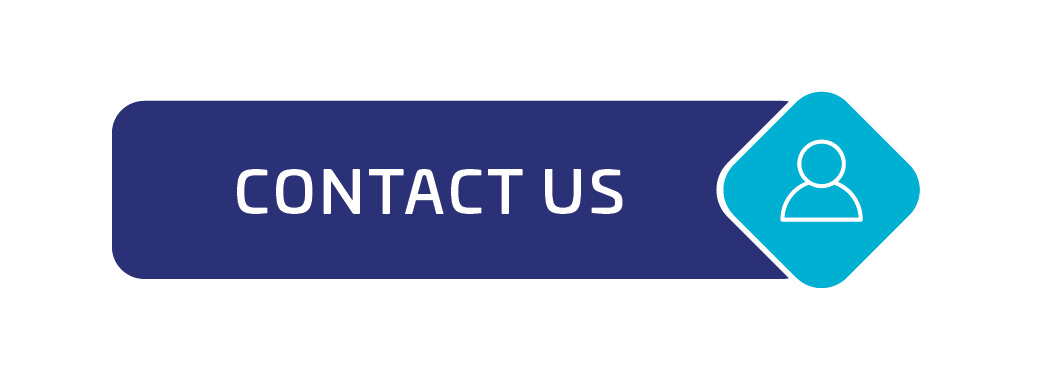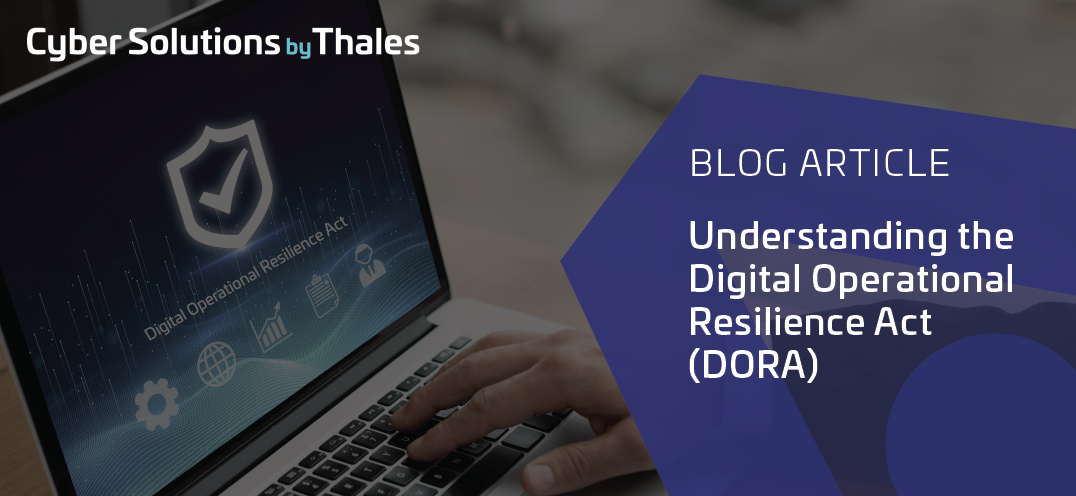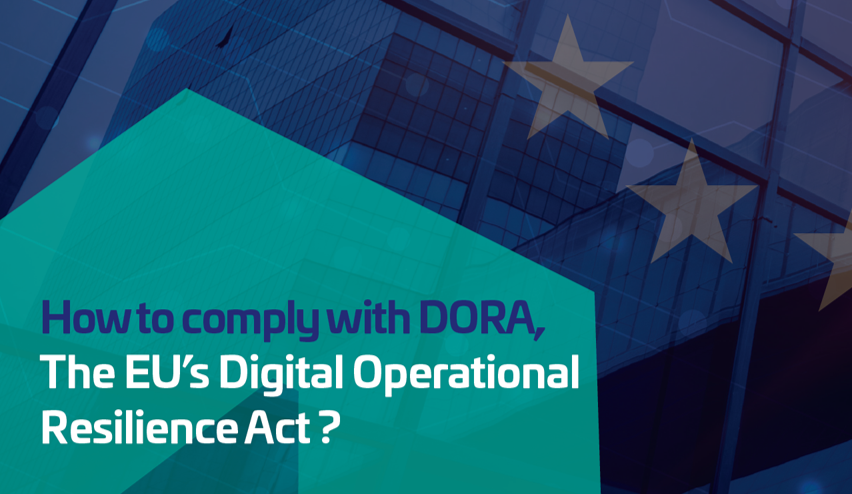Understanding the Digital Operational Resilience Act (DORA) - A Guide to Enhanced ICT Security in the EU Financial Sector
Introduction: Navigating the Digital Frontier - Understanding DORA
The Dawn of a New Era in Financial Resilience
The Digital Operational Resilience Act (DORA) is a landmark legislation by the European Union, reflecting a transformative approach towards managing Information and Communication Technology (ICT) risks in the financial sector. With the increasing reliance on digital technologies, the financial sector's operational resilience has become a paramount concern. DORA emerges as a strategic response to this challenge, aiming to fortify the sector against a wide range of digital threats.
Why DORA Matters Now More Than Ever
In recent years, the financial sector has witnessed a significant shift towards digitalization. This transition, while offering numerous benefits, has also exposed financial entities to new and complex cyber threats. The need for a unified regulatory approach to address these risks has never been more pressing. DORA represents this unification, bringing a holistic and stringent set of rules that cater to the modern digital landscape of the financial sector.
The Scope of DORA
DORA's scope is broad and inclusive, covering a wide range of financial entities from traditional banks and insurance companies to emerging players like crypto-asset service providers. It sets out clear guidelines for internal governance, ICT risk management, incident reporting, resilience testing, and third-party risk management, ensuring a comprehensive approach to digital operational resilience.
A Forward-Looking Approach to Financial Stability
DORA is not just about compliance; it is about adopting a forward-looking approach that embraces digital innovation while ensuring financial stability and consumer protection. By establishing rigorous standards for ICT risk management and promoting a culture of continuous improvement and collaboration, DORA seeks to elevate the overall resilience of the EU's financial sector against a backdrop of rapidly evolving digital threats.
The Impetus for This Article
This article aims to demystify DORA, delving into its key aspects and regional applications within the EU. By presenting case studies and analyzing its broader implications, the article seeks to provide a comprehensive understanding of DORA, guiding financial entities, policymakers, and stakeholders through the intricacies of this pivotal regulation.
Section 1: The Essence of DORA
Introduction to DORA
The Digital Operational Resilience Act (DORA) represents a pivotal step in fortifying the operational resilience of the financial sector against evolving Information and Communication Technology (ICT) threats. In an era where digital technologies are increasingly intertwined with financial services, DORA emerges as a critical regulatory framework to safeguard the sector's stability and integrity.
Purpose and Scope
DORA's primary objective is to establish a unified and stringent set of rules across the European Union for financial entities, focusing on their digital operational resilience. This legislation targets a wide array of financial participants, including banks, insurance companies, investment firms, and even critical third-party service providers, underlining the comprehensive approach of the EU towards ICT risk management.
Key Components of DORA
The act delineates several core components, including:

Aligning with EU Financial Regulation
DORA seamlessly integrates into the broader EU financial regulatory framework, complementing existing regulations such as GDPR and MiFID II, ensuring a holistic approach to both financial and data security.
Section 2: Impact on Financial Entities
Adapting to DORA's ICT Risk Management Framework
Financial entities in the EU must now adopt a more structured and comprehensive approach to ICT risk management. This involves identifying potential ICT risks, implementing preventive measures, and establishing robust response strategies. DORA necessitates a holistic view of ICT risk, encompassing not just technical aspects but also human and process-related factors.
Incident Reporting: A New Paradigm
DORA standardizes the process of incident reporting across the EU. Financial entities are required to promptly report significant ICT-related incidents to relevant authorities. This uniform reporting mechanism ensures a coordinated response to cyber threats and enhances the overall understanding of ICT risks in the financial sector.
Resilience Testing: Proactive and Continuous
Under DORA, regular testing of ICT systems becomes a mandate. This includes a range of testing methodologies like penetration testing, scenario-based testing, and more, tailored to the size and complexity of the financial entity. The goal is to proactively identify vulnerabilities and ensure continuous operational resilience.
The Proportionality Principle in Action
A key aspect of DORA is its proportionality principle. The regulation acknowledges the diversity in the size, nature, and complexity of financial entities and tailors its requirements accordingly. This approach ensures that smaller entities are not overburdened while maintaining a high standard of operational resilience across the sector.
Section 3: Case Studies from the EU Region
Illustrating DORA in Practice
In this section, real-life examples and case studies from various EU countries will be discussed to showcase how DORA is being implemented and its tangible impact on the financial sector.
- Case Study 1: A Large European Bank's ICT Risk Management Overhaul
- Background: A major European bank, operating across several EU countries, faced challenges in aligning its ICT risk management with DORA's new binding guidelines, which are largely in line with EBA and EIOPA guidelines but now carry enhanced supervisory scrutiny.
- Implementation: The bank updated its risk tolerances and key performance indicators, focusing on ICT disruptions. It conducted a comprehensive mapping of its assets and dependencies, particularly its Critical or Important Functions (CIFs), and carried out business impact analyses based on severe disruption scenarios.
- Outcome: The bank achieved a more resilient ICT framework, better prepared for digital operational challenges. It also developed sophisticated scenario testing methods and enhanced its overall operational resilience capabilities.
- Background: A major European bank, operating across several EU countries, faced challenges in aligning its ICT risk management with DORA's new binding guidelines, which are largely in line with EBA and EIOPA guidelines but now carry enhanced supervisory scrutiny.
- Case Study 2: A Mid-size Insurance Company Streamlining Incident Reporting
- Background: A mid-size insurance company in the EU had to streamline its incident reporting process to comply with DORA's consolidated requirements, which posed challenges in incident classification, analysis, and reporting.
- Implementation: The company improved its capabilities to collect, analyze, and disseminate information concerning ICT incidents and threats. It aligned its processes with DORA's requirements for reporting major ICT-related incidents to authorities.
- Outcome: The company's incident response efficiency improved significantly, providing a clearer understanding of its ICT risk landscape and enhancing its preparedness for potential cyber threats.
- Background: A mid-size insurance company in the EU had to streamline its incident reporting process to comply with DORA's consolidated requirements, which posed challenges in incident classification, analysis, and reporting.
- Case Study 3: A Small Investment Firm and Resilience Testing
- Background: A small investment firm had to adapt to DORA's resilience testing requirements. This involved advanced testing of its critical ICT systems and applications, a challenging task given its limited resources.
- Implementation: The firm established a proportionate digital operational resilience testing program, including various tests like vulnerability assessments and network security assessments. It focused on addressing vulnerabilities identified in these tests.
- Outcome: The firm enhanced its digital operational resilience and ensured compliance with DORA's requirements, demonstrating that DORA's proportionality principle effectively aids smaller entities.
- Background: A small investment firm had to adapt to DORA's resilience testing requirements. This involved advanced testing of its critical ICT systems and applications, a challenging task given its limited resources.
Learning from Real-Life Applications
Each case study will not only provide insight into the practical aspects of DORA implementation but also highlight the challenges and solutions encountered, offering valuable lessons for other entities navigating DORA compliance.
Section 4: ICT Third-Party Risk Management under DORA
Navigating the Complexities of Third-Party ICT Services
In the evolving landscape of digital finance, the reliance on third-party ICT services, including cloud computing, has significantly increased. DORA introduces comprehensive regulations to manage these third-party risks, ensuring that financial entities maintain operational resilience even when key functions are outsourced.
Key Aspects of Third-Party Risk Management under DORA:
- Contractual Arrangements and Compliance: Financial entities are required to have clear contractual arrangements with ICT service providers. These contracts must define specific rights, obligations, and service levels, particularly for critical functions. Entities remain fully responsible for compliance with DORA and other financial services laws at all times.
- Information Registers and Oversight: Entities must maintain updated information registers of all contractual arrangements with ICT third-party service providers. This register is crucial for supervisory authorities to exercise oversight and ensure that entities manage third-party risks effectively.
- Risk Assessments and Reporting: Before entering new contracts, financial entities must assess risks related to the ICT services supporting critical functions. Regular reporting to the competent authorities on new arrangements and the types of services provided by third-party providers is mandated.
- Focus on Cloud Service Providers: While not every cloud provider will automatically fall under DORA's supervisory framework, financial institutions' information registers will play a key role in determining which cloud providers are subject to supervision from 2025.
- Integration with Existing Regulatory Guidelines: DORA aligns with pre-existing regulatory guidelines such as the EBA Guidelines on outsourcing arrangements and the EIOPA Guidelines on outsourcing to cloud service providers, ensuring a cohesive approach to third-party risk management across the EU.
Challenges and Opportunities:
- The comprehensive nature of these regulations poses certain challenges, especially in terms of contract management and risk assessment processes.
- However, it also presents opportunities for financial entities to streamline their ICT service procurement and enhance overall operational resilience.
The Way Forward:
- Financial entities need to review and adapt their existing third-party risk management frameworks in line with DORA's requirements.
- Emphasizing on strategic planning, thorough risk assessment, and compliance monitoring will be key to navigating the complexities of third-party ICT service management under DORA.
Section 5: The Road Ahead - Future Implications of DORA
Embracing the Digital Future of the Financial Sector
The implementation of the Digital Operational Resilience Act (DORA) marks a significant stride towards a more secure and resilient financial sector in the European Union. As the financial world increasingly digitizes, DORA's comprehensive framework for ICT risk management becomes ever more crucial.
1. Greater Accountability and Enhanced Governance:
DORA places a strong emphasis on the role of the management body in overseeing ICT risk management. Financial entities are expected to integrate ICT risk considerations into their business strategies and ensure continuous engagement in monitoring and controlling these risks.
2. The Evolution of ICT Risk Management:
DORA's requirements for ICT risk management align with existing standards but introduce new elements that necessitate more sophisticated risk assessment and mitigation strategies. This includes enhanced incident reporting mechanisms and the inclusion of severe business disruption scenarios in business impact analyses.
3. Advanced Resilience Testing:
DORA establishes the need for regular and advanced digital operational resilience testing, pushing firms to develop broader and more accurate testing and scenario analysis capabilities. This includes mandatory threat-led penetration testing every three years for certain financial entities.
4. Expanded Supervisory Framework:
The supervisory framework under DORA extends to critical ICT third-party service providers, including cloud services. This indicates a shift in the oversight of digital service providers used by financial entities and highlights the importance of ICT in the financial sector.
5. Information Sharing as a Tool for Resilience:
DORA encourages financial entities to exchange information about cyber threats within trusted communities. This collaborative approach is expected to enhance the collective defense against cyber threats and contribute to the overall digital operational resilience of the financial sector.
6. Preparing for Implementation Challenges:
As DORA becomes applicable in January 2025, financial entities face the challenge of reviewing and adapting their ICT systems and processes to meet its standards. This preparation phase is crucial for ensuring smooth compliance and taking advantage of DORA's intended benefits.
Conclusion
DORA's comprehensive approach to digital operational resilience is a forward-looking response to the increasing ICT risks in the financial sector. While it presents challenges in terms of implementation and adaptation, it also offers opportunities for enhanced security, resilience, and collaboration. As the financial sector continues to evolve, DORA will play a pivotal role in shaping its digital future, making the financial landscape more robust against the backdrop of an increasingly complex cyber threat environment.
Author
Do you have any questions? Would you like to know more about the Digital Operational Resilience Act (DORA)? Contact our experts!




